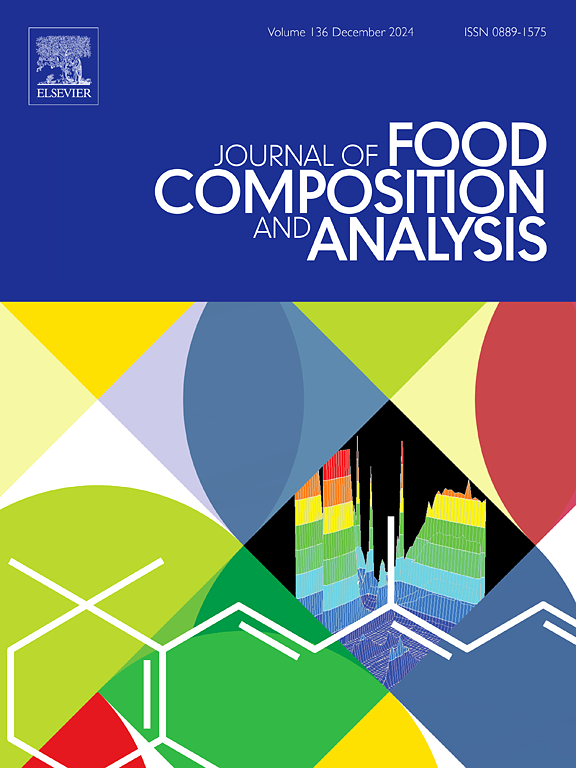A multi-feature fusion based method for detecting the moisture content of withered black tea
IF 4
2区 农林科学
Q2 CHEMISTRY, APPLIED
引用次数: 0
Abstract
This paper proposes a multi-feature fusion-based method for detecting the moisture content of withered black tea. Hyperspectral images at different withering stages were collected, and their spectra, texture and shape features were extracted. Texture features were extracted using the Gray Level Co-occurrence Matrix (GLCM). This approach described the spatial relationships between neighboring or adjacent pixels for calculating the texture characteristics of tea leaves during the withering process. Shape features were extracted through dimensionality reduction applied to the features extracted by a pre-trained Visual Geometry Group 19 (VGG-19) deep convolutional neural network. VGG-19 was capable of extracting low-level image features, such as edges and contours, representing the shape changes in tea leaves caused by moisture loss. These features were then fused with spectral features to build detection models. The impact of spectra, texture, and shape features on prediction accuracy was analyzed using five types of regressors. Results showed substantial improvement in prediction accuracy with multi-feature fusion. For the best partial least squares regression (PLSR) model, fusing all three features achieved a coefficient of determination (R2) of 0.7968 on the test set, improving by 0.0506, 0.054, and 0.0596 compared to models using individual spectra, texture, and shape features, respectively. The proposed method was also validated with an external dataset, consisting of 72 samples, covering two different tea varieties in two seasons. On the external dataset, the PLSR model maintained good generalization, with an R2 of 0.7384, improving by 0.1027, 0.1097, and 0.1326 over individual features. This demonstrates that the fusion of spectra, texture, and shape features significantly improves the model's accuracy and robustness across different tea varieties and seasonal variations. This study provides a fast, non-destructive detection method of moisture content in withered black tea, which can facilitate more precise monitoring of the withering process and ensure consistent quality in large-scale tea production.
求助全文
约1分钟内获得全文
求助全文
来源期刊

Journal of Food Composition and Analysis
工程技术-食品科技
CiteScore
6.20
自引率
11.60%
发文量
601
审稿时长
53 days
期刊介绍:
The Journal of Food Composition and Analysis publishes manuscripts on scientific aspects of data on the chemical composition of human foods, with particular emphasis on actual data on composition of foods; analytical methods; studies on the manipulation, storage, distribution and use of food composition data; and studies on the statistics, use and distribution of such data and data systems. The Journal''s basis is nutrient composition, with increasing emphasis on bioactive non-nutrient and anti-nutrient components. Papers must provide sufficient description of the food samples, analytical methods, quality control procedures and statistical treatments of the data to permit the end users of the food composition data to evaluate the appropriateness of such data in their projects.
The Journal does not publish papers on: microbiological compounds; sensory quality; aromatics/volatiles in food and wine; essential oils; organoleptic characteristics of food; physical properties; or clinical papers and pharmacology-related papers.
 求助内容:
求助内容: 应助结果提醒方式:
应助结果提醒方式:


